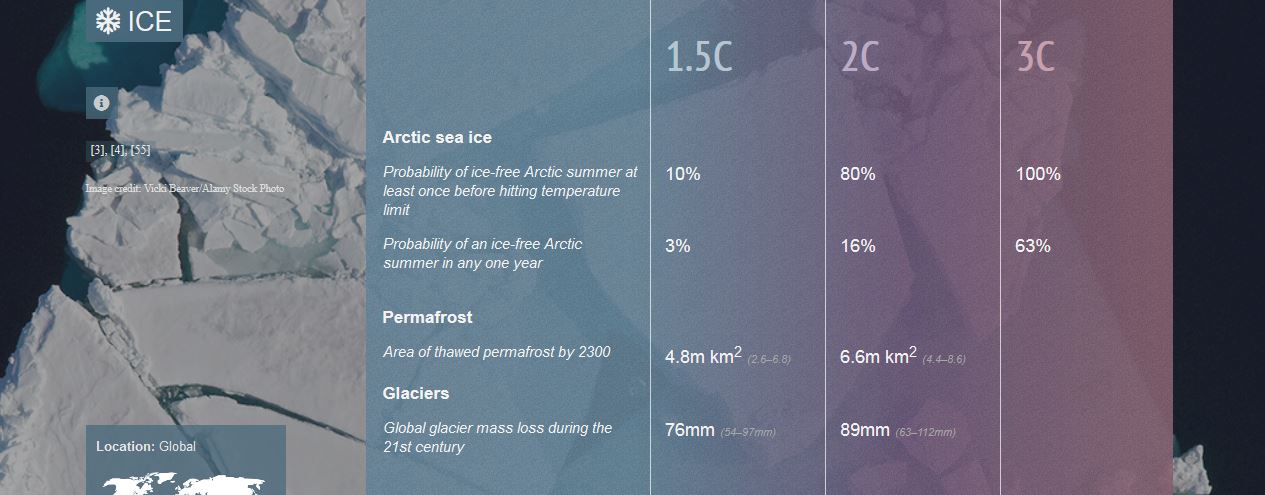Jari Kaivo-oja:
Inflation Advantages and Disadvantages of Finland in Relation to the EU Member Countries and U.S.A.
Data-based Analysis from July 2022 to April 2023 with Key Eurostat Inflation Index Numbers.
Future economic developments in Europe depend very much on the strength of inflation. If inflation is not contained, it could lead to a deep recession in Europe. This situational picture is such that it requires continuous monitoring in Finland and its economic decision-making. The positive thing for Finland is that we have been able to curb inflation despite the fact that we border Russia. This blog post presents a data-based situational picture analysis of Finland and the European Union, which shows that Finland has so far succeeded reasonably well in fighting inflationary pressures.
Inflation is a real problem for consumers and investors
Almost all economists are agreeing about the negative effects of inflation. Inflation, hyperinflation, and deflation have all had profound effects on societies, especially during periods of war and crisis. As noted recently by Stephen D. King (2023): “We Need to Talk About Inflation”. Stephen D. King is a very influential economist who has published many popular books, He is the author of “Losing Control: The Emerging Threats to Western Prosperity” (2010), “When the Money Runs Out: The End of Western Affluence” (2013) and “Grave New World: The End of Globalization, the Return of History” (2017) and “We Need to Talk About Inflation”. All these books are interesting and professionally written books. He was the Chief Economist at HSBC for 17 years (Stephen D. King – Wikipedia).
Today’s approach to managing inflation has been shaped by these episodes and informed by debates between different schools of economic thought from Irwin Fisher (Irving Fisher – Wikipedia) and Friedrich August Hayek (Friedrich Hayek – Wikipedia) to John Maynard Keynes (John Maynard Keynes – Wikipedia) and the monetarists. There are two major economic theories to explain the inflation process. (1) Demand-pull inflation and (2) Cost-push inflation.
While low and stable inflation can be beneficial for an economy by stimulating spending and investment, high and volatile inflation rates can have detrimental effects on economic stability, growth, and the overall well-being of individuals and businesses. One key problem of inflation is reduced purchasing power. When consumer and producer prices rise, the value of money decreases. This means that individuals and businesses can buy fewer goods and services with the same amount of money. As a result, people’s purchasing power is eroded, which can reduce their standard of living and limit their ability to save and invest.
Inflation has always negative impact on savings and investments. Inflation erodes always the value of money over time. When the inflation rate is higher than the interest rate earned on savings accounts or other low-risk investments, real returns become negative. This discourages ordinary people from saving and can lead to a decrease in investment, as individuals seek alternative ways to protect their wealth from inflation.
These kinds of facts are a fundamental reason to monitor the inflation rate trends of national economies. In this article, the main focus is on the difference in inflation rates between countries, which is important for price competitiveness. The differences are calculated relative to Finland’s monthly inflation levels. After all, the difference in price level always produces the possibility of arbitrage, which is considered very significant in economics. Large differences in inflation levels also create a price-based regulatory mechanism to contain inflationary pressures in Europe and maintain price competitiveness in the euro area. Price competitiveness and real economic competitiveness are key issues for regional and national competitiveness.
Inflation in Finland and in the EU-27 region in July 2022-April 2023
In this blog post, we assess recent inflation developments in Finland and Europe. There has been a worried public debate about rising inflation, both in Europe and around the world. In this sense, this blog post provides a timely insight into the debate on inflation developments in Europe.
First, I will present a figure 1 of inflation in terms of HICP consumer price development in Finland.

Figure 1. Inflation, HICP – monthly data index in Finland, July 2022-March 2023 (2015=100).
We can clearly see from the figure that consumer prices have risen significantly in Finland, but the development has been similar almost everywhere in Europe.
In Figure 2, I have compared consumer price developments with some other European countries and the United States.

Figure 2. Inflation, HICP – monthly data index in Finland, and in the U.S.A., Germany, Sweden, Poland and European Economic Area, July 2022-March 2023 (2015=100).
In this comparison, Finland fares surprisingly well. The development of consumer prices has been more moderate in Finland than in the European Economic Area, Germany and the United States.
Figure 3 shows a statistical indicator of monthly changes in inflation. The changes have been increasing to November 2022 (rate of change was 9), but after this peak month the speed of change has decreased to the level of 6. This is positive signal of change in inflation in Finland.

Figure 3. Inflation, annual rate of change, measured with HICP – monthly data (annual rate of change), All items of HICP, in 2022-07 (July 2022) – 2023-04 (March 2023) in Finland (Source: Eurostat 2023).
Figure 4 shows a comparative analysis of the rate of change in inflation in Finland and certain EU countries and the United States of America. This figure also shows positive developments in terms of inflation changes in Finland compared to these relevant peer countries.

Figure 4. Inflation, measured with HICP – monthly data (annual rate of change), All items of HICP, in 2022-07 (July 2022) – 2023-04 (March 2023) in Finland and some key European countries.
In Figure 5 I report inflation of producer prices in industry, domestic market – monthly data in Finland, for July 2022-March 2023. This figure shows that Finland has succeeded in significantly damming the growth of producer prices during this period. Inflation has fallen for these producer prices.

Figure 5. Inflation of producer prices in industry, domestic market – monthly data in Finland, July 2022-March 2023.
The figure 6 shows a comparative analysis of producer price developments. That, too, offers a very positive result for Finland.

Figure 6. Inflation of producer prices in industry, domestic market – monthly data in Finland, July 2022-March 2023.
Inflation Advantages and Disadvantages of Finland
We now turn to a comparative analysis of the inflation indicators for Finland and the EU countries. The aim is to assess the differences in the trend development of inflation developments between Finland and the rest of the EU. We look at differences in general consumer price HICS developments, HICS inflation change rates and producer price index developments. This section provides three different benchmarking analyses.
First, in Figure 7, inflation advantages of Finland in relation to some European countries and the U.S.A., July 2022-April 2023 based on HICP – monthly data (index) are reported. This figure 7 shows positive advantages in relation to consumer price levels in Finland.

Figure 7. Inflation advantages of Finland in relation to some European countries and the U.S.A., July 2022-April 2023 based on HICP – monthly data (index).
Figure 8 shows a clear picture that differences in consumer price inflation are quite large in the EU region. This figure reveals inflation advantages of Finland in relation to some European countries and the U.S.A. (July 2022-March 2023 based on HICP – monthly data, index).
The figure 8 shows that HICP consumer prices have developed strongly in the Baltic countries and Poland.

Figure 8. Inflation advantages of Finland in relation to some European countries and the U.S.A., July 2022-March 2023 based on HICP – monthly data (index).
In Figure 9, I report Average Inflation Advantages, minus index numbers and disadvantages of Finland, positive index numbers with HICP Index of Finland minus HIPC Index of other country, in July 2022-April 2023.

Figure 9. Average Inflation Advantages, minus index numbers and disadvantages of Finland, positive index numbers (HICP Index of Finland minus HIPC Index of other country) in July 2022-April 2023).
The figure 9 shows that the development of consumer prices in Finland has been more subdued than in most EU countries. This figure shows that only Switzerland has succeeded clearly better than Finland.

Figure 10. Average Inflation Advantages, minus index numbers and disadvantages of Finland, positive index numbers (HICP Index of Finland minus HIPC Index of other country) in July 2022-April 2023).
In Figure 11 I report Average Inflation Advantage of Finland, Measured with HICP – monthly data (Annual rate of change) with all items of HICP, in 2022-07 (July 2022) – 2023-04 (March 2023). This Figure 11 of the pace and change in consumer market inflation also tells a similar positive story about the successful containment of Finland’s inflation rate.

Figure 11. Average Inflation Advantage of Finland. Measured with HICP – monthly data (Annual rate of change), All items of HICP, in 2022-07 (July 2022) – 2023-04 (April 2023) in Finland.
In Figure 12, I report Inflation Advantage of Finland, Measured by Average Domestic output price index – in national currency (July 2022-March 2023). This Figure 12 of domestic output price inflation also tells a similar positive story about the successful containment of Finland’s inflation rate. In this comparison, too, Switzerland fares clearly better than Finland.

Figure 12. Inflation Advantage of Finland, Measured by Average Domestic output price index – in national currency (July 2022-March 2023).
Summing up
It is good to be aware that economic trends in inflation can change the competitive landscape in Finland, in the European Union and in the world. Finland should, of course, take inspiration from Switzerland’s monetary and economic policy. Benchmarking and results support this policy recommendation. See also How Switzerland beat high inflation; Why the Swiss economy is strong (cnbc.com)
The comparative benchmarking calculations now presented show that Finland’s current position in this comparison is not so bad at all. That is why we should continue to act rigorously in promoting consumer and producer price competitiveness in Finland.
We know that high inflation rates make it challenging for businesses and individuals to plan for the future. When prices are rising rapidly, it becomes difficult to accurately predict costs, revenues, and profits. All kind of economic biases arise because of high inflation rates. This kind of fundamental uncertainty can discourage long-term investments and economic growth as businesses become hesitant to commit resources in such an uncertain environment.
If inflation in one country, for example in Finland, is higher than in its trading partners, it can make the country’s exports more expensive relative to imports. This can result in a decrease in export competitiveness and a deterioration of the trade balance, leading to a negative impact on economic growth. The results of this blog text show that in recent months from July 2022 to April 2023, Finland has kept its inflation in control. However, there is always a risk of wage-price spiral. Inflation can trigger a wage-price spiral, where workers demand higher wages to keep up with rising prices. As businesses and industries increase wages to meet these demands, production costs rise, which can further fuel inflation. This spiral can create a cycle of increasing prices and wages, making it difficult to control inflation and maintain stable economic conditions.
This kind of negative inflation wage-price spiral process can now be found, for example in Turkey, Hungary and Romania, Latvia, Estonia and Lithuania. Baltic countries are now fighting back against inflation pressures and for example, Estonia has been quite successful (Estonia Inflation Rate – April 2023 Data – 1999-2022 Historical – May Forecast (tradingeconomics.com)). Also Latvia and Lithuania have shown more promising result in the battle against inflation (Latvia Inflation Rate – April 2023 Data – 1998-2022 Historical – May Forecast (tradingeconomics.com) and Lithuania Inflation Rate – April 2023 Data – 1993-2022 Historical – May Forecast (tradingeconomics.com)). Behind the inflationary pressures in the Baltic countries has, of course, been the Russia-Ukraine war, which has increased direct and indirect cost pressures in these countries, which border Russia.
In a special inflation case of Turkey, we can talk about superinflation Is Turkey on the brink of hyperinflation? | Financial Times (ft.com). Future economic developments in Europe depend very much on the strength of inflation. If inflation is not contained, it could lead to a deep recession in Europe. This situational picture is such that it requires continuous monitoring in Finland and its economic and political decision-making.
The positive thing for Finland is that we have been able to curb inflation despite the fact that we border Russia. One of the reasons why we in Finland have succeeded in curbing price inflation may also be related to Finland’s recent NATO membership, but the matter should be investigated in more detail later. I’m not going to speculate on this in this blog post, but it might be worth exploring.
Jari Kaivo-oja
Research Director (Finland Futures Research Centre, Turku School of Economics, University of Turku)
Adjunct Professor (University of Helsinki, University of Lapland and University of Vaasa)
Professor, Kazimiero Simonavičiaus University, KSU, Vilnius, Lithuania
This blog post is related to the R&D project ”Sustainable competitiveness through productivity and digitalisation in Satakunta” (ProDigy), which has received ERDF funding (European Regional Development Fund) in 2023.
Background reading and references
Akerlof, George A. , Dickens, William T. , Perry, George L., Gordon, Robert J. and Mankiw, N. Gregory (1996) The Macroeconomics of Low Inflation. Brookings Papers on Economic Activity, Vol. 1996, No. 1 (1996), pp. 1–76.
Anderson, Chad (2023) The Space Economy: Capitalize on the Greatest Business Opportunity of Our Lifetime. A Guide for Investors, Entrepreneurs and Aspiring Professionals. 1st Edition. Hoboken, New Jersey: Wiley.
Barro, Robert J. (1995) Inflation and Economic Growth. Working Paper 5326. October 1995. National Bureau of Economic Research. Washington. The USA.
Desai, Raj M., Olofsgård, Anders & Yousef, Tarik M. (2003) Democracy, Inequality, and Inflation, American Political Science Review, Volume 97, Issue 3, August 2003, pp. 391–406. Cambridge University Press.
Eurostat (2023) Source dataset(s) from PRC_HICP_MANR, PRC_HICP_MIDX and STS_INPPD_M. HICP – monthly data (index) [PRC_HICP_MIDX$DEFAULTVIEW]; HICP – monthly data (annual rate of change) [PRC_HICP_MANR$DEFAULTVIEW]; and Producer prices in industry, domestic market – monthly data [STS_INPPD_M$DEFAULTVIEW]
Fisher, Irving (1977) [1930] The Theory of Interest. Philadelphia: Porcupine Press.
Gillman, Max (2023) The Spectre of Price Inflation. Newcastle: Agenda Publishing Ltd.
Hayek, Friedrich August (2008) Denationalisation of Money. Reissued Edition. London: The Institute of Economic Affairs.
James, Harold (2023) The Economic Crises that Shaped Globalisation. New Haven and London: Yale University Press.
Keynes, John Maynard (2007) [1936]. The General Theory of Employment, Interest and Money. Basingstoke, Hampshire: Palgrave Macmillan.
King, Stephen D. (2010) Losing Control: The Emerging Threats to Western Prosperity. New Haven CT and London: Yale University Press.
King, Stephen D. (2013) When the Money Runs Out: The End of Western Affluence. New Haven CT and London: Yale University Press.
King, Stephen D. (2017) Grave New World: The End of Globalization, the Return of History. New Haven CT and London: Yale University Press.
King, Stephen D. (2023) We Need to Talk About Inflation: 14 Urgent Lessons from the Last 2,000 Years Kindle Edition. Yale: Yale University Press.
Romer, Christina D. & Romer, David H. (1996) Reducing Inflation. Motivation and Strategy. University of Chicago Press. Chicago.
Monetary Policy Generates Poverty: Unchecked it will be our Nation’s Ruin
Skillen M.D., Richard D. (2019) Monetary Policy Generates Poverty: Unchecked It Will Be Our Nation’s Ruin. USA.
Mankiw, N. Gregory, Romer, David & Weil, David N. (1990) A Contribution to the Empirics of Economic Growth. National Bureau of Economic Research. Washington. USA.
Cover picture: pixabay.com







